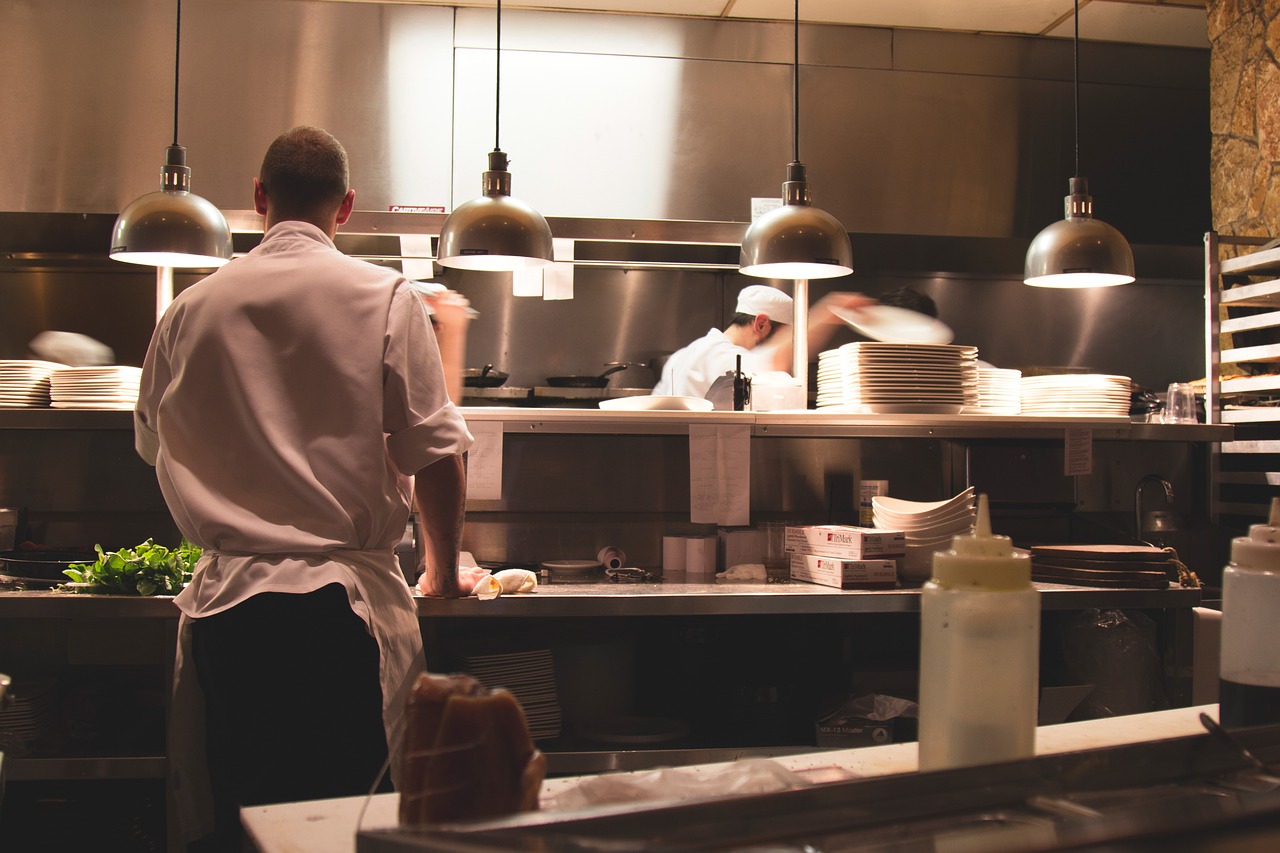We’ve talked about how to start your own online grocery store with Blink, and we’ve talked about the top food influencers to follow. Let’s talk about the 9 most important types of restaurant technology and hardware in 2022. The restaurant industry is changing at a high speed as restaurateurs are forced by the ever-changing customer preferences to accept the rapidly digitizing age. The way to run a restaurant keeps on changing over time as business owners embrace this new age of technology.
How are Types of Restaurant Technology and Hardware evolving?
Restaurateurs can sometimes feel forced into accepting high-tech ways of doing things as the competition to be the new ‘it’ restaurant grows. As big chains compete with each other, they introduce new technologies and set up even higher standards for growing restaurants as they try to lure in tech-savvy customers.
Big chains are also trying to cut down on labor costs by coming up with technological solutions which force other restaurants to come up with their own tech solutions. Customers today are also highly demanding, they want fast quick solutions to their food cravings. Restaurant customers no longer like to wait for food, they want multiple options available for them. They have changed their food preferences from what they like to eat to where and how they like to eat it.
The percentage of restaurants striving to digitize their businesses is growing with the growing customer demands. Customers want the option to eat in, eat out. have food delivered, or be ready for taking away all the while meeting with their ever-changing dietary restrictions without compromising on taste.
Customer demands grew along with the growth in technology in the last decade or so. The restaurant industry before this used to be a pen and paper-oriented industry and that used to be enough for people. Even though restaurants are rapidly trying to keep up with the ever-growing technological age there is still a lot of room for growth.
To keep up with the ever-growing preferences of people restaurants need to keep on investing in newer technologies. Restaurateurs need to stay up-to-date with new industry trends especially if they want to run a more efficient business and compete with the big chains.
Restaurant owners are now learning that to be able to compete with the big league businesses they need to invest in high-end technology. Technology that not only helps with guest service but also newer technology that helps back-of-the-house operations to cut down on labor cost and increase revenue.
In this article, we list nine of the most important restaurant technology and hardware that you will need to run a successful restaurant. So whether you have been in the restaurant tech game for long or just joining in these technology and hardware solutions will benefit your restaurant. Here are 9 ways types of restaurant technology and hardware are evolving in 2022.
1. Touchscreen Point of Sale Terminals
Point of sale terminals are usually found near the entrance of a restaurant. POS terminals are now present in touchscreen technology in the form of huge screens or tablets.
Most of the POS terminals are durable and can withstand the intensity of everyday restaurant pace. Touchscreen point of sale terminals help increase efficiency and a restaurant’s revenue as the order-taking process becomes much quicker.
POS screens eliminate the need to order food at the counter, saving the time of your restaurant staff. Staff members that would usually be standing at the counter waiting to take orders can save that time and cook as guests order and tip on the POS terminals.
As a restaurant, you should invest in touchscreen point of sale terminals that have the ability to take payments via credit card, phone, and cash. They should be easy to use, new staff members should not require extra time to learn the software allowing them to pick it up quickly without needing any extra tutorial time.
This improves order speed so your team can keep the line moving. POS terminals also improve order accuracy and simplify the accounting process as all transaction data is collected directly on the POS software cutting down on human error.
2. Order and Pay at the Table digitally

For most customers a dining experience doesn’t just mean outstanding food, but also the speed and the efficiency it comes with. Safety, as well as quick and efficient food delivery, has always been a major requirement for customers’ to like a restaurant. As COVID-19 hit, these three became integral to the customer’s dining experience.
COVID-19 caused a lot of businesses to slow down or lose revenue, leading to a lot of research on the effect COVID-19 had on restaurants. The latest research shows that guests started putting safety as their number one requirement to have a good dining experience. 34% of the population interviewed want to get rid of cash payments and want a contactless card or phone payment method available to them. Another significant number of people said they want to be able to pay at the table to reduce contact with other people for their safety.
Order and Pay technology puts guests at ease as it allows them to order their food and pay for it all the while sitting at their own tables, safely away from herds or people they’d otherwise encounter at the counter. This also helps improve order accuracy and provides better customer service.
3. Handheld point of sale systems
Instead of a multi-step cheque/bill process, handheld POS systems can allow your staff to close cheques and expedite billing through a single step. In a traditional process, staff will ask guests if they are ready for a check, then bring them the invoice, take payment back to the point of sale system, and then bring them their change back. Having a handheld POS saves this multi-step hassle, by allowing your staff to streamline operations and letting guests pay in one step, right at the table.
Given handheld POS also allows for at-the-table ordering, your staff can improve their order collection and serving speed significantly. Order accuracy also improves, helping avoid food wastage, and turn tables faster. As a result, your restaurant serves more customers in a day, helping improve revenues and also drive up customer satisfaction.
In addition to the operational improvements driven by handheld POS systems, improvement in guest experience is also a huge add-on benefit. With your servers having more time to engage with customers directly, guests feel more connected and appreciate that they are being taken care of.
4. Contactless payments
The ability for guests to pay at the table through contactless payment terminals is increasingly becoming a critical requirement. This has been driven by the COVID-19 pandemic driving the need for avoiding unnecessary contact, with customers seeing this as an essential requirement for dining out. It is the type of restaurant technology and hardware based solution that is more for the customer’s ease than anything else, but whatever makes things easier.
Contactless payments let both your customers and staff avoid unnecessary contact, by letting them swipe or tap their card, and make their payments efficiently. This also helps your staff avoid sick days, and improves operational efficiency.
5. Self Order Kiosks
Fast-food chains, as well as fast-casual restaurants, have seen a sharp growth in the adoption of self-order kiosks in recent years. As a result, customers now see self-order kiosks as a key requirement for their overall guest experience.
There are various reasons why self-order kiosks have gained popularity, including diners’ demand for easy-to-understand menus and a digital experience. Kiosks software also allow customers to control their ordering process, so they can take time to make choices, and customize orders as needed.
Digital kiosks and menus also allow restaurants to offer more choices, and increase upselling opportunities, through prompts and targeted promos. As a result, average basket size and value increase, generating more revenue and also letting you save costs on additional staffing.
6. Kitchen display screens
Kitchen displays screens or KDS have become an efficient way of tracking orders, allocating resources, and keeping things moving effectively. Kitchens can be extremely hectic and fast-paced, and relying on old-fashioned printed tickets, or manual order management can lead to missed or delayed orders, as well as staff frustration.
Compared to traditional printers, KDS can also prove to be more environmentally friendly and saves restaurants the additional cost and hassle of using ink printers. In addition, handling of paper and ink receipts can also be avoided, reducing the risk of contamination with food.
Kitchen display systems are generally mounted to a wall, or a high location in the kitchen, where the screen is visible to all staff. This can help staff stay organized, pick up and fulfill orders accurately, and keep things moving in line with customer demands. All of this can go a long way in improving customer satisfaction and experience, as well as keeping your staff efficient and stress-free.
7. Printers
Kitchen displays along with digital receipts have become very popular in recent years, as they offer a lot of benefits and improve efficiency. However, there is still demand from customers for printer receipts, and large full-service restaurants also want the optionality to use physical receipts. As such, most restaurants still need paper printers. These can vary in type and below we discuss some of the main types.
Receipt printers
Receipt printers use thermal or heat technology to imprint characters or images on thermally sensitive paper, and as a result, don’t use any ink. Such printers are mostly used in front house operations, given they are quieter and faster than traditional ink printers.
Kitchen printers
Kitchens mainly use ink or impact printers, as compared to thermal printers. This is to make sure that your busy and completely tied up kitchen teams/chefs don’t miss out on new receipts that are being printed, given thermal printers can be very quiet and go unnoticed. Impact printers solve this issue, as they are loud and more noticeable, ensuring that chefs are aware when new receipts are printed. More importantly, ink or thermal printers allow for colored printing, which allows chefs to highlight keynotes on receipts, slips, and memos.
8. Cash drawers
While POS technology has advanced significantly in recent times, the traditional cash drawer is still a key tool for storing, managing and securing your cash. Some of the more modern cash drawers however do allow you to create a link with the POS system and ensure that all transactions records are live.
As a standard operating procedure, you should always ensure that your cash drawers are regularly emptied, kept in a locked location overnight, and only accessible by select personnel in your teams.
9. Integrated online ordering solutions is a great type of Restaurant Technology and Hardware
Enabled by the proliferation of technology, mobiles, and internet access, off-premise dining, online ordering, and takeout orders were seeing strong growth in popularity even before the start of the Covid-19 pandemic. More importantly, coming out of the pandemic, restaurants have seen a huge surge in demand for off-premise dining including delivery and takeout, to an extent that online sales are now their main source of revenue and profits.
However, the big question is around how customer behaviors might be changing as the pandemic comes to an end, and people return to their old ways of operating. Will guests change their dining preferences? Will they return to in-house dining or continue to rely on online delivery? There are answers in a recent report, “the guide to restaurant guest dining during Covid-19”
This report uses inputs from a segment of guests to reflect on potential changes in behaviors pre/post-pandemic. The main finding was that guests will continue to place more orders online and for takeaway. Nearly 30% of guests reported that they would order takeout more, with almost 20% claiming that they would be relying more on deliveries. Around 20% of guests also reported that they would dine out less, and avoid eating in crowded restaurants.
With similar other research papers to back up our thesis, it can be safe to expect that off-premise dining, online sales, and deliveries are here to stay and will remain a crucial part of restaurant revenue growth in coming years.
While food aggregators and third-party ordering platforms such as Uber Eats, Hunger station, or Door Dash have become critical pieces of the online food ordering puzzle, moving to your in-house integrated online ordering solution can be hugely beneficial in various ways. With an online ordering solution, your guests can place orders directly from your kitchen, for both takeout and delivery. More importantly, through the use of an in-house integrated ordering solution, your restaurant can avoid paying exorbitant fees/commissions to food aggregators and have much better control over your customer data and experience. In addition, research also suggests that guests prefer ordering directly from restaurants. Nearly 80% of customers placing orders directly from restaurant websites at least once a month.
What is Restaurant Kitchen Technology?
The term “restaurant kitchen technology” refers to the various types of equipment and software that restaurants use to manage their operations. It can include everything from point-of-sale (POS) systems to kitchen display systems (KDS).
In recent years, there has been a growing trend of restaurants using technology to improve their operations. Some restaurants have even gone so far as to completely revamp their kitchens with the latest and greatest in restaurant kitchen technology.
While it is true that restaurant kitchen technology can be expensive, the benefits it can provide are well worth the investment. Here are 9 of the essential types of restaurant kitchen technology and hardware that you should be aware of in 2022:
- Point-of-sale (POS) systems
- Kitchen display systems (KDS)
- Order management systems (OMS)
- Inventory management systems (IMS)
- Food cost analysis software
- Menu engineering software
- Employee scheduling software
- Customer relationship management (CRM) software
- Social media marketing tools
If you are a restaurant owner or manager looking to improve your operations, implementing some of this restaurant kitchen technology is a great place to start. Not only will it help you run your business more efficiently, but it can also help you increase sales and profits.
What are Restaurant Technology Trends?
Like any other industry, the restaurant industry constantly evolves and changes. It means that restaurants must always look for new trends to stay ahead of the competition. Some of the latest restaurant technology trends include:
- Mobile ordering and payments
- Cloud-based POS systems
- Artificial intelligence (AI)
- Internet of Things (IoT)
- Virtual reality (VR)
- Blockchain
- Robot servers
- Ghost kitchens
- Food delivery apps
As it is evident, many new and exciting restaurant technology trends are worth paying attention to in 2022. If you want to stay ahead of the curve, you need to ensure that you are implementing some of these new technologies in your restaurant. Restaurants using technology are benefitting from the value these new technology trends are adding to their businesses and upgrading at a fast pace. Keeping up with the changing trends and evolving as the business are evolving should be the heart of every businessman. For it is the survival of the most adaptable now more than ever.
What are the Benefits of Using Technology in Restaurants?
There are many benefits that restaurants can enjoy by using technology. Some of the most important benefits include:
- Improved operations
- Increased sales
- Improved customer service
- Reduced costs
- Increased efficiency
- Greater transparency
- Better decision-making
- Improved communication
- Enhanced security
As you can see, there are a lot of advantages that come with using technology in restaurants. If you have been thinking about implementing some new restaurant kitchen technology, now is the time to do it.
As you can see, you should be aware of many different types of restaurant kitchen technology and hardware in 2022. If you are looking to improve your operations and increase your sales, then implementing some of this new technology is a great place to start. Stay ahead of the competition by keeping up with the latest restaurant technology trends and implementing them in your restaurant.
Check out Blink for restaurants and request a free demo
Related Articles:
 How to Write a Restaurant Food Business Plan for Restaurants In a Post Pandemic Industry?
How to Write a Restaurant Food Business Plan for Restaurants In a Post Pandemic Industry?
 Top 8 Michelin Star Restaurants in Dubai You Can Order From
Top 8 Michelin Star Restaurants in Dubai You Can Order From
 How to Attract More Customers to Your Restaurant (*Updated 2023 Guide)
How to Attract More Customers to Your Restaurant (*Updated 2023 Guide)
 Food Delivery Service Benefits for Restaurants In 2021
Food Delivery Service Benefits for Restaurants In 2021
 8 Smart Ways To Grow Your Online Food Delivery Orders In Saudi Arabia
8 Smart Ways To Grow Your Online Food Delivery Orders In Saudi Arabia










